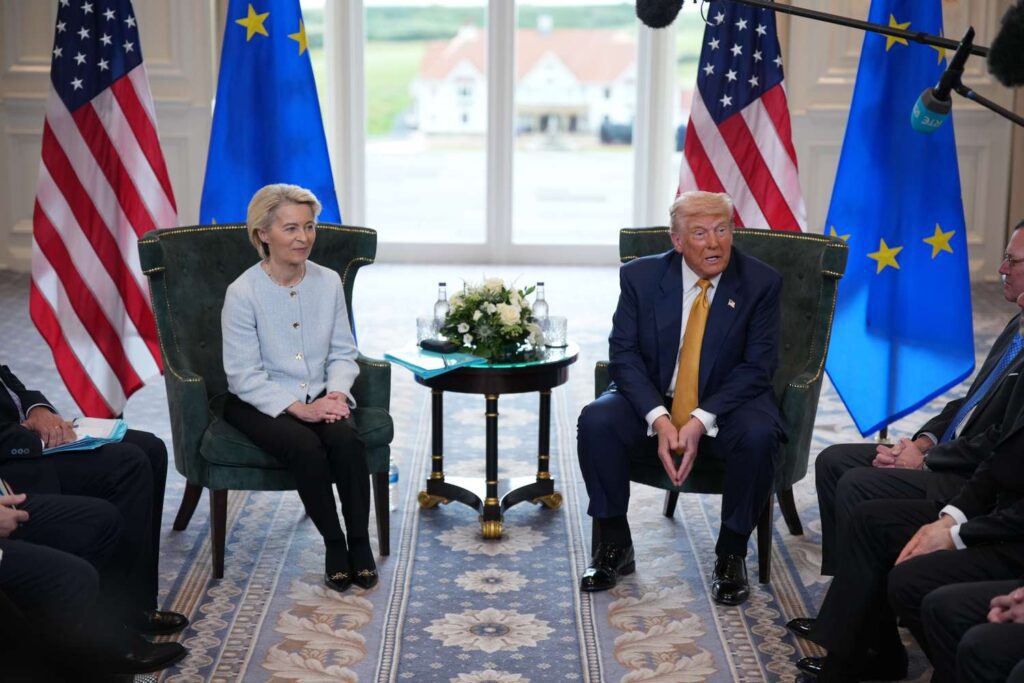After weeks of tense negotiations, the US and the European Union agreed to terms of trade.
President Donald Trump and European Commission President Ursula von der Leyen announced on Sunday that the bloc of 27 countries would purchase $750 billion worth of energy from the United States, investing $600 billion more in the country than its current level. The EU has agreed to not charge tariffs on US goods and to purchase unspecified amounts of military equipment from the country.
In return, the US charged 15% tariffs on cars, and “all others” from EU Trump later revealed that 15% tariffs did not include drugs and that a 50% tariff on steel and aluminum would still apply to EU countries.
“(Trades) bring stability and predictability, which is very important to our business on both sides of the Atlantic,” von der Reyen said.
The 15% tariff is half of what Trump threatened to be threatened on August 1 in a letter he posted to social media earlier that month. The EU had prepared retaliatory tariffs that would be effective if the two governing bodies were unable to reach the transaction.
The EU is one of the largest trading partners in the United States. According to the Census Bureau, the US exported $369.8 billion in goods to EU imports from the EU, reaching $605.7 billion, bringing the trade deficit to $235.9 billion.
This is the sixth trade agreement carried out by the Trump administration. Earlier this month, Vietnam, Indonesia, Japan and the Philippines agreed to trade the deal. Prior to that, the UK had settled on a trade policy with the US despite being exempt from higher “mutual” tariffs.
Trump said his administration expects to make three or four more transactions before higher tariffs take effect in around 20 countries. The rest of the countries will receive a confirmation letter summarizing US tariffs by the August 1 deadline, he said.
Commerce Secretary Howard Lutnick also said the administration’s approach to semiconductor tariffs will be revealed in two weeks.
